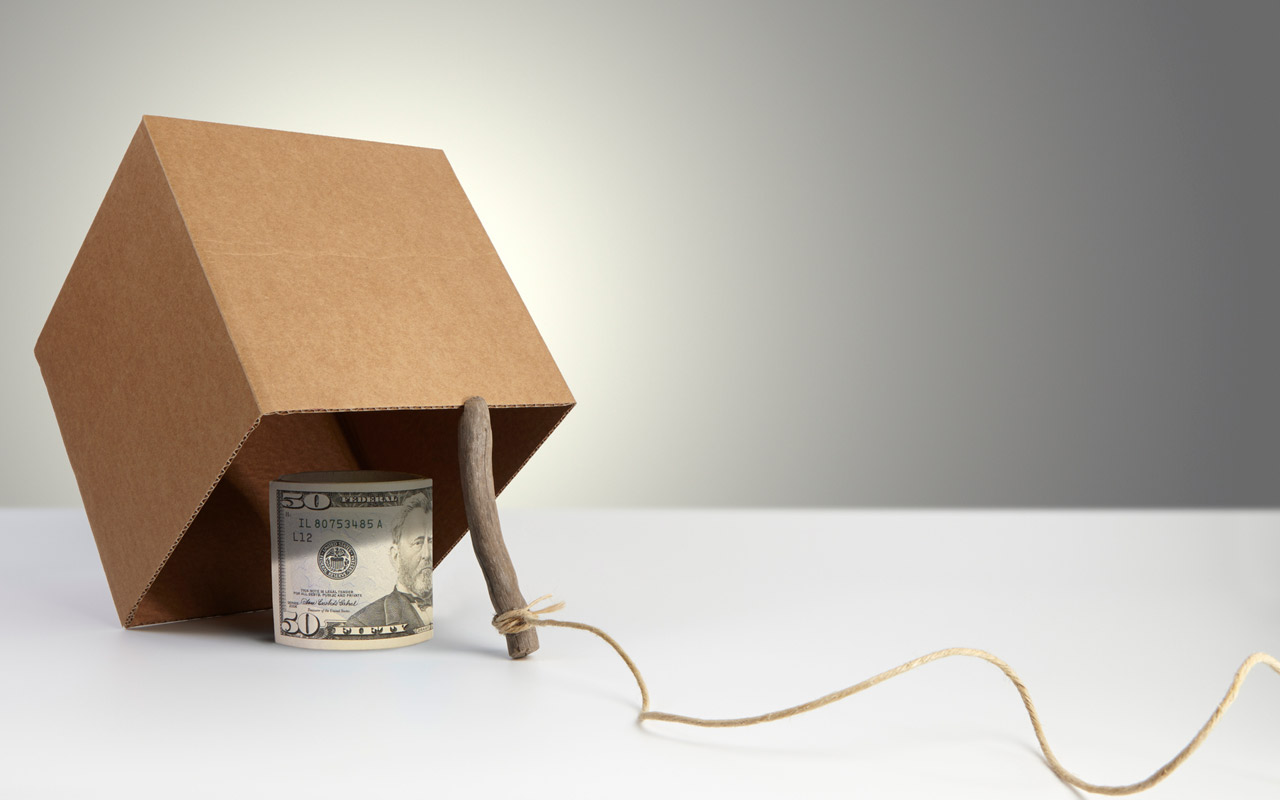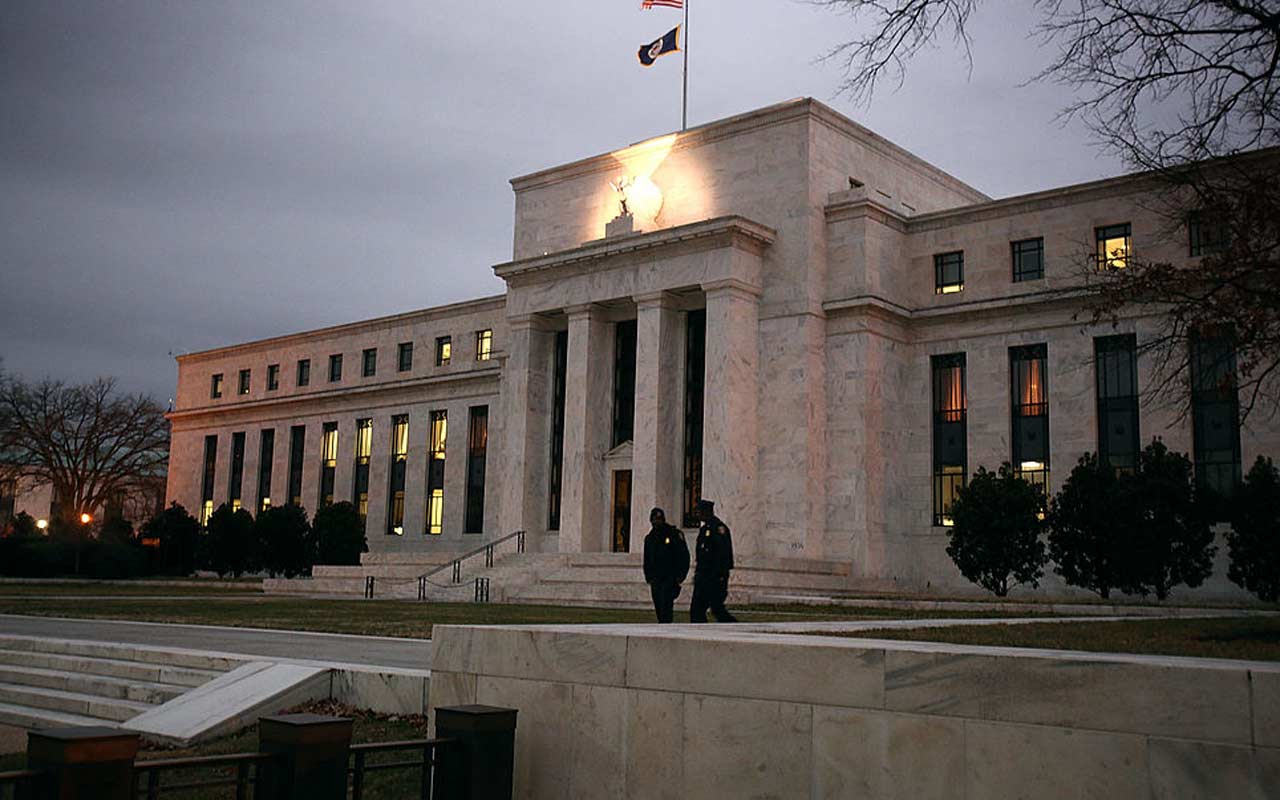6 Steps to Snare Higher Yields in Retirement
Income investing is supposed to be like watching a predictable movie that you’ve seen a dozen times before.


Income investing is supposed to be like watching a predictable movie that you’ve seen a dozen times before. But lately, it has been full of plot twists. Over the past few years, most income investors settled back with their popcorn for a long period of rising interest rates, believing the Federal Reserve would slowly but surely hike rates back to more normal levels. For bond investors, that would mean some temporary pain—when rates rise, bond prices fall—but it would also bring the welcome relief of higher yields.
Then the Fed ripped up the script. After three years of fairly steady rate increases, the Fed left rates unchanged early this year and signaled that it’s unlikely to raise rates at all in 2019. Instead of bracing for further rate increases, many bond traders started betting that the Fed would even cut rates this year. (Kiplinger expects the Fed to stand pat.) The shifting expectations drove new money into bonds of all stripes. The Bloomberg Barclays U.S. Aggregate Bond Index gained nearly 3% in the first quarter, while junk bonds rallied more than 7%.
“The theme was, ‘Look out, rates are rising. You’ll get killed in bond funds,’ ” says Warren Pierson, senior portfolio manager at Baird Advisors. “That hasn’t happened at all.”
Retirees who depend on high-quality bonds for income may be heaving a sigh of relief, but this movie isn’t over yet. The bond rally at the start of the year left few fixed-income bargains, and the Fed’s interest-rate pause means that rates on cash and near-cash holdings will remain stuck at relatively low levels. The shift in Fed policy should also prompt investors to reevaluate holdings, such as floating-rate funds, that they may have scooped up for protection against rising rates. Income investors turning to dividend-paying stocks, meanwhile, may find that good values are scarce in a market that has recently touched record highs.
So where should retirees turn for investment income? Terri Spath, chief investment officer at Sierra Investment Management, suggests focusing on the three “D”s: diversification, defense and distribution. Yes, you want a decent yield, but don’t rely on any one asset class for income—and use particular caution when approaching investments with juicy yields. “This is not a time when investors want to be heroic or take on excessive amounts of risk,” Pierson says.
But this isn’t a time to hide out in cash, either. Retirees need to pay the bills and ideally earn more than the 2% inflation rate. Fortunately, income investors willing to cast a wide net can find some good buys in everything from short-term bonds to dividend-paying stocks and preferred securities. Here are six ways to find market-beating yields of 2.5% to 6%, while keeping risk in check.
Unless otherwise noted, data are as of May 9.

Think Short Term
As you seek to maximize your investment income, don’t overlook some of the safest holdings: very short-term, high-quality bonds. Now that the Fed has raised short-term rates and longer-term yields have declined, the yield curve is fairly flat—meaning short- and long-term bonds offer roughly the same yields. So investors have little incentive to take on the additional risks of holding longer-term bonds. “There’s some real yield on the short end of the curve, and we think that looks pretty attractive to investors,” Pierson says.
So don’t let all your cash sit in low-yielding bank deposit accounts or brokerage sweep accounts. “A 1.5% yield on cash and checking is going to risk your buying power over time,” says Linda Erickson, founding partner of Erickson Advisors, in Greensboro, N.C.
Top money-market mutual funds, such as Vanguard Prime Money Market (symbol VMMXX), yield close to 2.5%—about the same as a 10-year Treasury bond. Vanguard Short-Term Investment-Grade Investor (VFSTX, a member of our Kiplinger 25 list of favorite no-load mutual funds), holds investment-grade corporates as well as asset-backed and commercial mortgage-backed securities and yields 2.8%.
If you’re willing to tie up your money for a year, however, you can find similar yields, as well as federal deposit insurance coverage, in certificates of deposit. One-year CDs from PurePoint Financial and Ally Bank, for example, yield about 2.7% to 2.8%. Compare CD rates at DepositAccounts.com or Bankrate.com.

X-Ray Your Core Bond Holdings
At the core of their fixed-income portfolios, many retirees hold at least one bond fund that hews closely to the Bloomberg Barclays U.S. Aggregate Bond Index or the Bloomberg Barclays U.S. Corporate Bond Index—and they’re expecting that fund to be a steady performer if markets go haywire. After all, these indexes focus on high-quality fare while excluding riskier holdings, such as junk bonds and emerging-markets debt.
But there are rising risks in these high-quality bond benchmarks—and by extension, any funds tracking them. The Aggregate Index’s duration, a measure of interest-rate sensitivity, has climbed to about six years, whereas it averaged roughly 4.5 from 1989 through 2008, according to Charles Schwab. A fund with a six-year duration can be expected to lose about 6% if rates rise by 1 percentage point. If you’re in an Aggregate index-tracking fund, “you have a lot more risk in that portfolio than you might expect,” Spath says.
Another growing concern: “There has been a general decline in the quality of investment-grade corporate bonds,” says Kathy Jones, chief fixed income strategist at Schwab Center for Financial Research. In the Corporate Bond index, the share of bonds rated BBB, the lowest investment-grade rating, has grown steadily in recent years and now stands at roughly 50%.
The good news is that you’re not chained to these benchmarks. Choose low-fee funds that have plenty of flexibility to find income wherever they see fit and a proven track record of generating a decent yield without a lot of risk. Baird Core Plus Bond (BCOSX, 2.75%) for example, can hold government and investment-grade corporate bonds as well as high-yield and dollar-denominated emerging-markets debt. The fund charges below-average fees of 0.55% annually and has topped more than 80% of its peers over the past 15 years, delivering average annual returns of nearly 5%, according to Morningstar.
- Dodge & Cox Income (DODIX, 3%), likewise, has built an excellent long-term track record while spreading its bets among government bonds, agency mortgages, corporate bonds, high-yield debt and other holdings. The fund charges annual expenses of 0.42%.

Reflect on the Fed’s Shift
In recent years, many investors flocked to floating-rate funds for protection from rising rates. Floating-rate securities’ interest payments adjust periodically based on changes in a benchmark rate, giving investors a cushion as rates rise, but they also often come with higher levels of credit risk.
Now that the Fed is on pause, there’s little rationale for holding floating-rate securities, managers and analysts say. “You’re not going to get much upside if the Fed is done hiking,” Jones says, “and you have all the credit risk.”
In T. Rowe Price Spectrum Income (RPSIX, 3.6%), the Fed’s pivot has prompted manager Charles Shriver to trim floating-rate holdings and add to his high-yield bond allocation. “With the Fed on pause, it takes away a meaningful headwind” for riskier assets like junk bonds, Shriver says. Although the high-yield market looks a bit expensive at this point, he says, the yields are still attractive and defaults are likely to remain low.
Because junk bonds are no bargain right now, investors should step carefully here. Kiplinger 25 member Vanguard High-Yield Corporate (VWEHX, 3.6%) is one of the most conservative funds in the category, treading lightly in the junkiest parts of the junk-bond market. Annual expenses are just 0.23%.

Pocket Some Tax-Free Income
Tax-sensitive retirees should venture into the municipal-bond arena—but leave their taxable-bond playbook at home. While the flat Treasury yield curve is leading many advisers to favor short-term over long-term taxable bonds, the reverse is true in the muni market, where the yield curve still has an upward slope.
That’s partly because of the tax-law changes passed in late 2017. A reduction in the corporate tax rate weakened demand for longer-term munis among institutions—such as banks and insurance companies—that have traditionally been buyers of those bonds. That puts downward pressure on longer-term muni prices and boosts yields.
- The $10,000 cap on state and local tax deductions, meanwhile, has bolstered the case for muni bonds among individual investors in high-tax states such as New York and California. For investors in the 25% tax bracket or higher, munis with five- to 10-year maturities look attractive versus Treasuries on an after-tax basis, Jones says. But short-term munis, she says, are “not very well valued.”
- Fidelity Intermediate Municipal Income (FLTMX, 2.5%), a member of the Kiplinger 25, tends to steer clear of troubled issuers and charges relatively low fees of 0.37%. At the end of April, the fund’s holdings had a dollar-weighted average maturity of five years.
While shakier issuers such as Illinois tend to dominate the headlines, “overall the gradual recovery over the last 10 years has improved the financial condition of most municipalities significantly,” Pierson says, “so we think there’s decent value” in munis.

Buy Bargain-Priced Dividend Payers
Expectations that the Fed’s benchmark interest rate will remain relatively low for the foreseeable future provide “more ammunition for stocks,” says John Buckingham, editor of The Prudent Speculator newsletter. The 1.9% yield of Standard & Poor’s 500-stock index looks attractive compared to the 2.5% 10-year Treasury yield, considering that stocks offer the potential for capital appreciation and dividends that generally grow over time.
- Stocks, of course, tend to offer a bumpier ride than bonds. If you need something to settle your stomach, Buckingham suggests thinking of the stock market as an income-producing property—say, an apartment building. A landlord doesn’t care about daily fluctuations in the building’s value. What matters is the income stream that it’s generating.
Many dividend-focused money managers say they’re now finding bargains in the health care sector, which has been beaten down amid the debate in Washington over health care policy and drug prices. Buckingham likes biotechnology leader Amgen (AMGN, recent price $172, forward dividend yield 3.4%), maker of the inflammatory-disease drug Enbrel and immune-system drugs Neupogen and Neulasta. Phil Davidson, manager of the American Century Equity Income fund, says he has recently added to his position in Swiss drugmaker Novartis AG (NVS, $81, 3.5%) as he seeks out innovative companies that aren’t totally reliant on drug prices to drive profit growth.
The financial sector has also been under a cloud of late, as the flat yield curve raises investors’ concerns about banks’ ability to profit from the gap between short- and long-term rates. But strong job growth and low unemployment signal that the economy remains healthy, and that means “banks are still going to do well,” Buckingham says. He likes Comerica (CMA, $76, 3.5%), which is focused on commercial banking and has a broad geographic reach. Davidson favors Wells Fargo (WFC, $47, 3.9%), which has been mired in scandal in recent years but remains a top gatherer of deposits. The franchise is “bent but not broken,” Davidson says. Although it may take some time for returns to improve, he says, “you’re getting paid while you wait.”
Subscribers can see Buckingham’s list of 15 undervalued dividend payers offering yields of 3% or more in the Retirement Report online archive for 2019.

Seek Higher Yields—Selectively
Not excited about the income you’re generating in stocks or bonds? Try an asset class that’s a hybrid of the two: preferred stocks.
Preferreds, which are typically issued by investment-grade companies, offer average yields close to 6%. “If you compare that to other areas within the investment-grade space—munis, corporates, Treasuries—you’re not coming anywhere close” to that yield, says Brian Cordes, a senior vice president at Cohen & Steers. Preferreds offer steady income payments, as well as tax advantages. The payouts are often qualified dividend income, which is taxed at your long-term capital-gains rate rather than the ordinary income rate applied to bond income. They also offer an element of security: Issuers must pay preferred dividends before any dividends on their common stock.
Investors should have a five- to 10-year time horizon, as preferreds can be volatile and may be hit hard if rates rise, Jones says. But given the strong credit quality and generous coupons, she says, “if you’re looking to stretch a bit for some yield, preferreds can be the place to do it.”
Picking individual preferreds can be a thorny task. Many preferreds are callable, meaning issuers can redeem the shares at a set price after a certain number of years—potentially leaving investors to reinvest at lower rates. You can sidestep the complexity—and diversify among hundreds of securities—by opting for a preferred stock exchange-traded fund such as iShares Preferred and Income Securities (PFF, 5.9%), and or Invesco Preferred (PGX, 5.6%).
Profit and prosper with the best of Kiplinger's advice on investing, taxes, retirement, personal finance and much more. Delivered daily. Enter your email in the box and click Sign Me Up.

-
 Small Caps Can Only Lead Stocks So High: Stock Market Today
Small Caps Can Only Lead Stocks So High: Stock Market TodayThe main U.S. equity indexes were down for the week, but small-cap stocks look as healthy as they ever have.
-
 Ask the Editor: Tips for Filing Your 1040
Ask the Editor: Tips for Filing Your 1040Ask the Editor In this week's Ask the Editor Q&A, Joy Taylor answers questions on preparing and filing your 2025 Form 1040.
-
 Is Direct Primary Care Right for Your Health Needs?
Is Direct Primary Care Right for Your Health Needs?With the direct primary care model, you pay a membership fee for more personalized medical services.
-
 States That Tax Social Security Benefits in 2026
States That Tax Social Security Benefits in 2026Retirement Tax Not all retirees who live in states that tax Social Security benefits have to pay state income taxes. Will your benefits be taxed?
-
 What Fed Rate Cuts Mean For Fixed-Income Investors
What Fed Rate Cuts Mean For Fixed-Income InvestorsThe Fed's rate-cutting campaign has the fixed-income market set for an encore of Q4 2024.
-
 The Most Tax-Friendly States for Investing in 2025 (Hint: There Are Two)
The Most Tax-Friendly States for Investing in 2025 (Hint: There Are Two)State Taxes Living in one of these places could lower your 2025 investment taxes — especially if you invest in real estate.
-
 The Final Countdown for Retirees with Investment Income
The Final Countdown for Retirees with Investment IncomeRetirement Tax Don’t assume Social Security withholding is enough. Some retirement income may require a quarterly estimated tax payment by the September 15 deadline.
-
 What to Do With Your Tax Refund: 6 Ways to Bring Growth
What to Do With Your Tax Refund: 6 Ways to Bring GrowthUse your 2024 tax refund to boost short-term or long-term financial goals by putting it in one of these six places.
-
 What Does Medicare Not Cover? Eight Things You Should Know
What Does Medicare Not Cover? Eight Things You Should KnowMedicare Part A and Part B leave gaps in your healthcare coverage. But Medicare Advantage has problems, too.
-
 12 Great Places to Retire in the Midwest
12 Great Places to Retire in the MidwestPlaces to live Here are our retirement picks in the 12 midwestern states.
-
 15 Cheapest Small Towns to Live In
15 Cheapest Small Towns to Live InThe cheapest small towns might not be for everyone, but their charms can make them the best places to live for plenty of folks.
